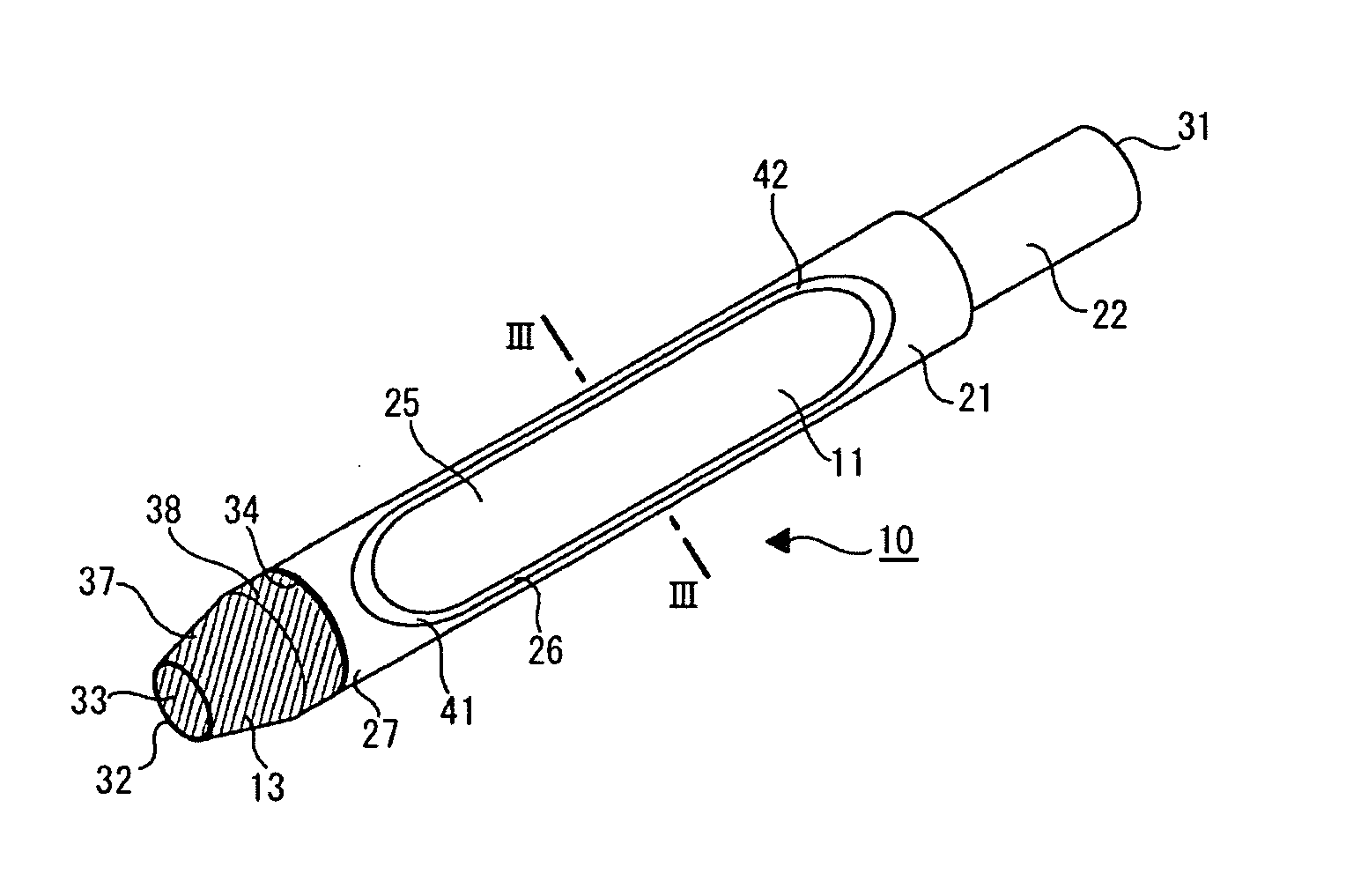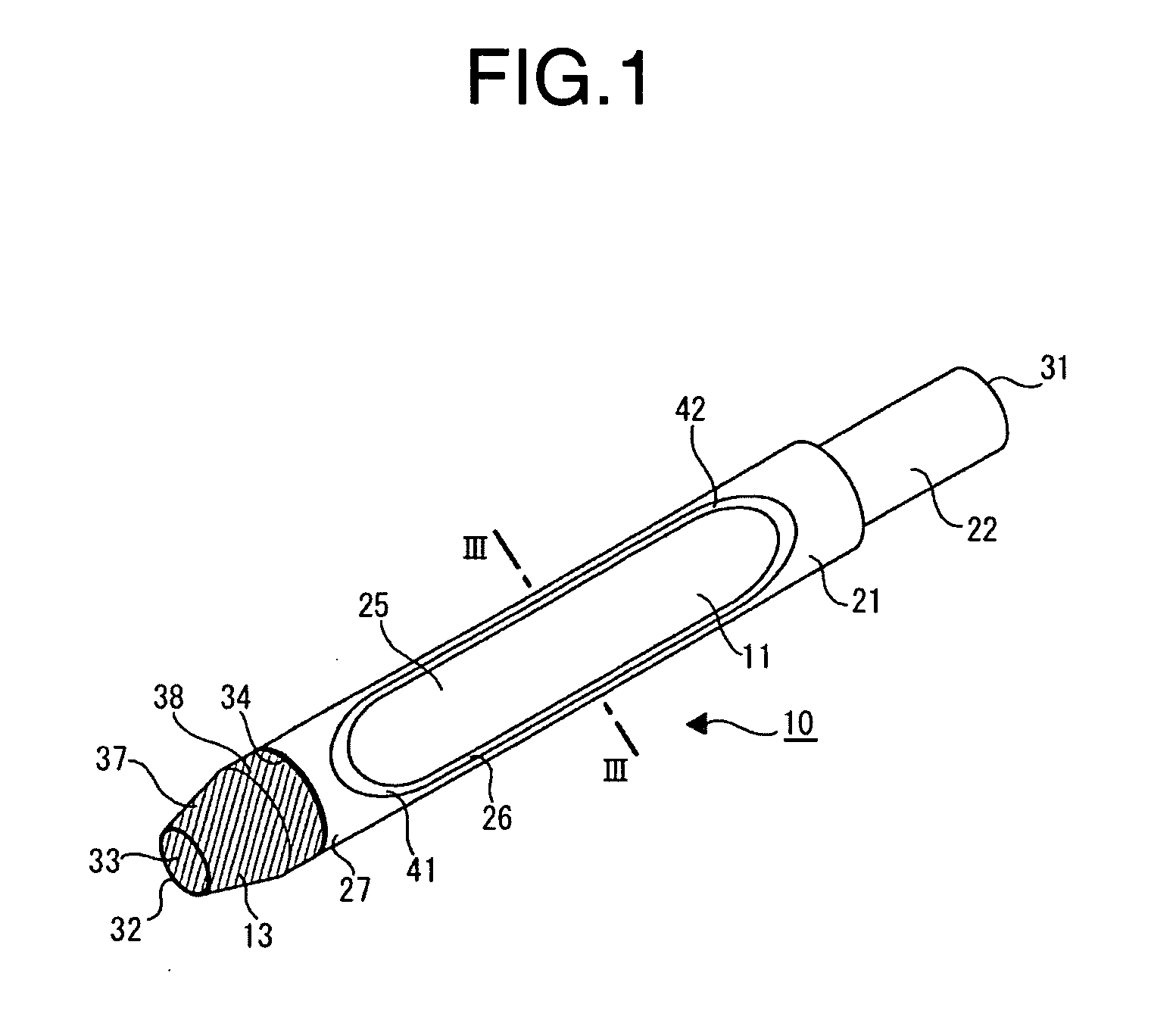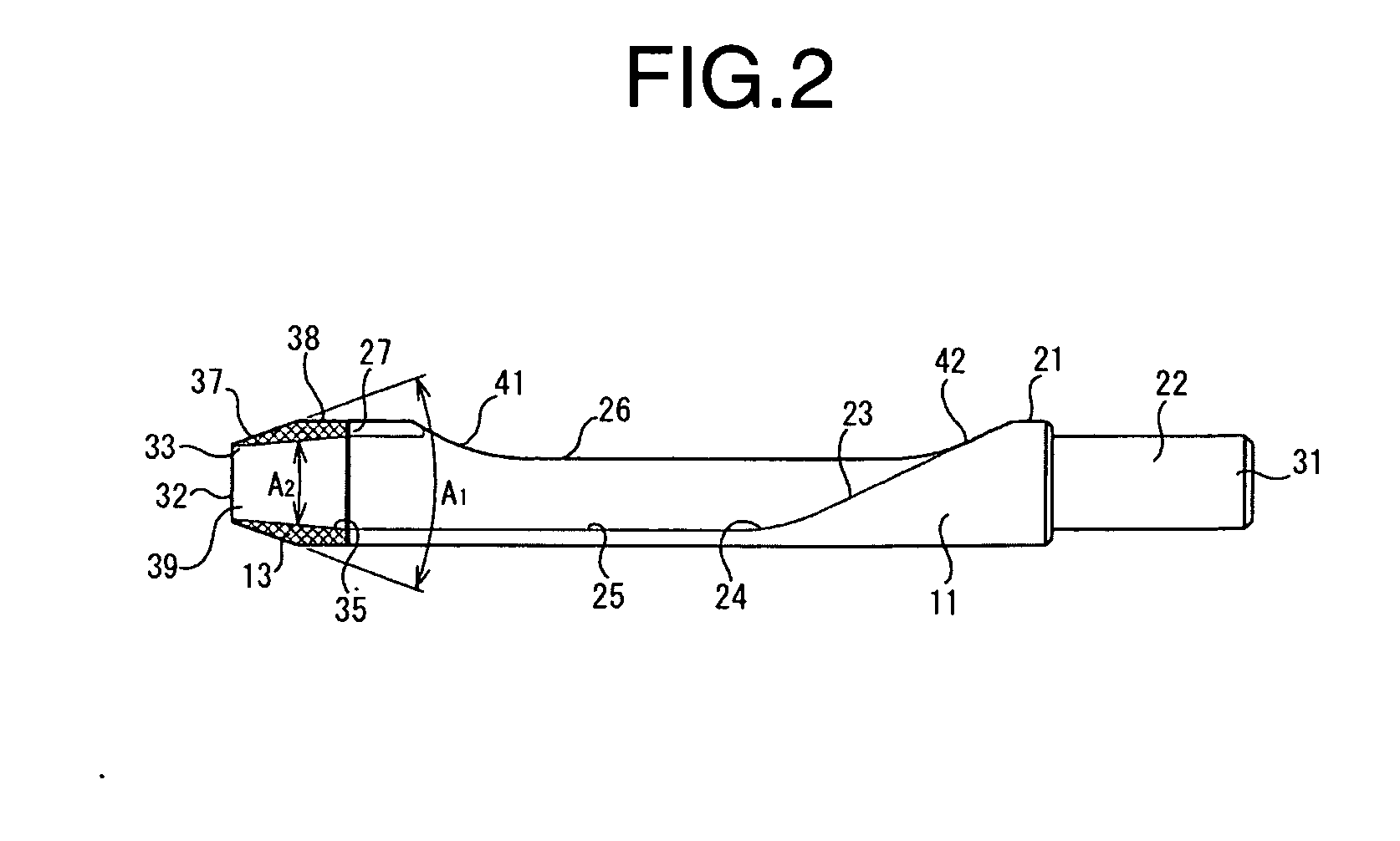Aeration tine device
a technology of aeration tines and tines, which is applied in the direction of drags, lawn mowers, agriculture tools and machines, etc., can solve the problems of increasing the cost of aeration tines, so as to achieve adequate disposal of soil plugs, smooth operation, and excellent controllability
- Summary
- Abstract
- Description
- Claims
- Application Information
AI Technical Summary
Benefits of technology
Problems solved by technology
Method used
Image
Examples
Embodiment Construction
[0020] Referring to FIGS. 1 to 5, an aeration tine device according to an embodiment of the invention is described. As shown in FIG. 1, the aeration tine device 10 according to the embodiment is chiefly constituted of a tubular tine member 11 in a tubular shape and a hard metal tip 13 having a frustum shape of a cone. This aeration tine device 10 is generally attached in a plural number to reciprocally moving arms of a soil aerator machine when used for turf aeration work on golf courses, soccer fields, etc.
[0021] The tubular tine member 11 is made of a carbon steel or alloy steel. The structural material for making the tubular tine member 11 can be selected from relatively hard durable materials such as carbon steels and alloy steels, but may be selected from other materials such as stainless steel, and forged steel or cast steel according to use or purpose of the tine. The tubular tine member 11 is in a substantially cylindrical shape extending longitudinally along an axial direc...
PUM
 Login to View More
Login to View More Abstract
Description
Claims
Application Information
 Login to View More
Login to View More - R&D
- Intellectual Property
- Life Sciences
- Materials
- Tech Scout
- Unparalleled Data Quality
- Higher Quality Content
- 60% Fewer Hallucinations
Browse by: Latest US Patents, China's latest patents, Technical Efficacy Thesaurus, Application Domain, Technology Topic, Popular Technical Reports.
© 2025 PatSnap. All rights reserved.Legal|Privacy policy|Modern Slavery Act Transparency Statement|Sitemap|About US| Contact US: help@patsnap.com



